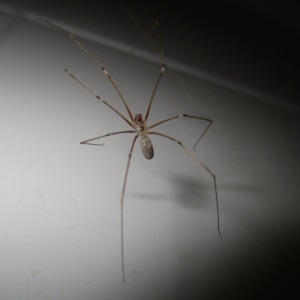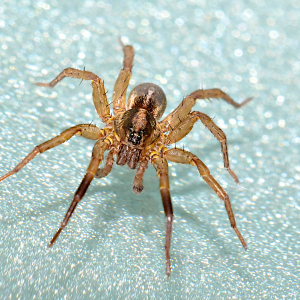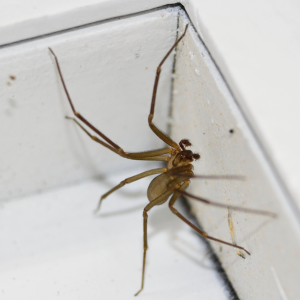


Fall is the time for crisp air, warm sweaters, and, unfortunately, an influx of spiders seeking warmth indoors. In St. Louis, the “fall spider season” brings a variety of arachnids into homes and businesses. Knowing which spiders to watch out for can make all the difference between peaceful cohabitation and an unsettling experience.
Understanding Fall Spider Season in St. Louis
As temperatures drop in autumn, spiders naturally migrate indoors in search of food and shelter. St. Louis, with its mix of urban and suburban areas, provides an ideal habitat for many spider species. This seasonal movement often sparks curiosity—and concern—for homeowners and businesses alike.
While most spiders are harmless and even beneficial, some species can pose risks, ranging from nuisance webbing to venomous bites. Let’s explore the spiders you might encounter during this season.
Common Spiders Found During Fall Spider Season
House Spiders: Your Most Frequent Visitors
House spiders, including the common American house spider, are the most likely arachnids to enter your space during fall. Known for their small size and messy cobwebs, these spiders are harmless to humans.
- Appearance: Yellowish-brown body with a rounded abdomen.
- Behavior: They create webs in corners and rarely wander.
- Risk Level: Low. These spiders are not venomous and help control other pests.
Wolf Spiders: The Ground-Dwellers
Wolf spiders are robust, hairy, and often mistaken for tarantulas due to their intimidating size. They don’t spin webs but instead hunt prey on the ground.
- Appearance: Dark brown with light stripes.
- Behavior: Active hunters, often spotted scurrying across floors.
- Risk Level: Low to moderate. Although their bites are not venomous, they can cause mild irritation.
Brown Recluse: A Spider to Watch Out For
One of the most concerning spiders in the St. Louis area, the brown recluse, is infamous for its venomous bite. These spiders prefer dark, undisturbed areas like basements or closets.
- Appearance: Light brown with a violin-shaped marking on its back.
- Behavior: Shy and reclusive, they avoid humans but may bite if provoked.
- Risk Level: High. Their bites can lead to necrotic skin lesions and require medical attention.
Black Widow: A Rare but Dangerous Visitor
Although less common, black widow spiders may make their way indoors during fall. Recognized by their glossy black bodies and red hourglass marking, they are among the most venomous spiders in the U.S.
- Appearance: Shiny black with a distinctive red marking.
- Behavior: Often found in dark, cluttered spaces like garages or sheds.
- Risk Level: High. Their bites can cause muscle pain, cramping, and systemic symptoms.
Signs of Spider Infestations
Wondering if your home has become a spider haven? Look out for these signs:
- Webs: Finding cobwebs in corners, windows, or unused rooms.
- Spider Sightings: Regularly spotting spiders in different areas.
- Egg Sacs: White, round sacs that house hundreds of baby spiders.
- Dead Insects: Spiders thrive where there’s a food source, so an abundance of dead insects may indicate their presence.
Preventive Measures During Fall Spider Season
Seal Cracks and Gaps
Inspect your home’s foundation, doors, and windows for openings. Use caulk or weather stripping to seal potential entry points.
Declutter Your Space
Spiders love hiding in cluttered areas. Regularly clean out closets, basements, and garages to make your home less appealing to these arachnids.
Outdoor Maintenance
Keep your yard tidy by trimming bushes, removing debris, and ensuring that woodpiles are stored away from the house.
Reduce Indoor Lighting
Spiders are attracted to light because it draws in prey. Use outdoor lights sparingly, and consider yellow bulbs, which attract fewer insects.
How to Handle Spider Encounters Safely
- Use a Glass and Paper Method: For non-threatening spiders, carefully trap them in a glass and release them outdoors.
- Vacuuming: Remove webs and spiders using a vacuum with a hose attachment.
- Professional Extermination: For venomous species like the brown recluse or black widow, contact a pest control professional.
STL Pest Control: Your Spider Solution in St. Louis
At STL Pest Control, we specialize in managing spider infestations during fall spider season. Our team uses safe and effective methods to protect your home and family from unwanted arachnids. Whether you’re dealing with harmless house spiders or more dangerous species, we’ve got you covered.
FAQs
How can I identify a brown recluse spider?
Brown recluse spiders are light brown with a distinctive violin-shaped marking on their back. They are reclusive and prefer dark, quiet areas.
Are wolf spider bites dangerous?
Wolf spider bites are not venomous but can cause mild irritation or itching. They are generally harmless to humans.
What attracts spiders to my home?
Spiders are drawn to homes with abundant food sources (insects), clutter, and easy access through cracks or gaps.
How can I prevent spider infestations during fall?
Seal cracks, declutter, maintain outdoor spaces, and reduce indoor lighting to minimize spider activity.
When should I call a pest control professional?
If you notice venomous spiders like the brown recluse or black widow, or if the infestation becomes unmanageable, contact a professional immediately.
Are all spiders harmful during fall spider season?
No, most spiders are harmless and even beneficial, as they help control pest populations.
Conclusion
Fall spider season in St. Louis is inevitable, but with awareness and proactive measures, you can coexist with these fascinating creatures—or keep them outside where they belong. If spiders are giving you trouble, STL Pest Control is here to help. Don’t let arachnids take over your home this autumn; take action today!
Resources
Check out these resource for more information

